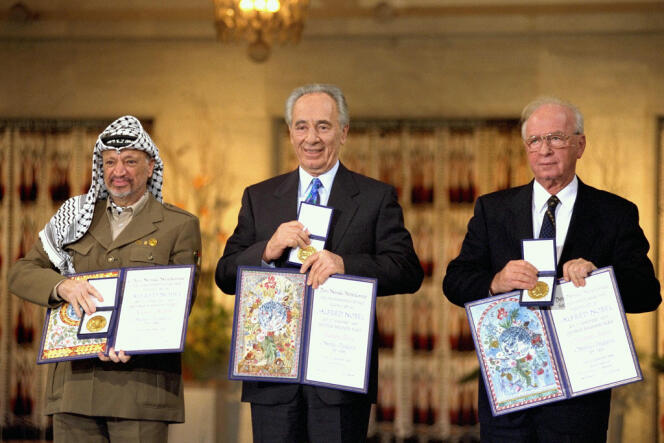


In November 1947, the United Nations adopted the principle of the two-state solution. It voted for a plan to divide Palestine, which had been under British control for 25 years, into a Jewish state and an Arab state, with Jerusalem internationalized. The plan enjoyed the joint support of the United States and the Soviet Union, who, on this occasion, put aside their differences in these early days of the Cold War. It was approved by the Zionist leadership, for whom the allocation of 55% of Palestine to a Jewish state represented an unhoped-for victory, even though the Jewish population amounted to only a third of the total. It was rejected by the Arab side, which denounced the dispossession of the indigenous majority population in favor of recently settled Jewish immigrants, and was concerned about the fate of the large Arab minority that would continue to live in the future Jewish state.
The war for Palestine broke out as soon as the UN voted on the partition plan, first between Zionist and Arab militias, then, after the end of the British Mandate for Palestine in May 1948, between the new State of Israel and the Arab armies. More than half of the 750,000 Palestinians who were forced to leave their homes did so before the Declaration of the Establishment of the State of Israel. This mass exodus, known in Arabic as the "Nakba" (the "catastrophe"), was accompanied by the destruction or Judaization of hundreds of Palestinian settlements on what was now Israeli territory, covering 77% of Mandate Palestine (Jordan annexed 22%, with the Egyptian-administered Gaza Strip accounting for the remaining 1%).
The UN admitted Israel as a member state in May 1949, and the Arab states agreed to deny the Palestinians any autonomous representation. It was not until two decades later that Yasser Arafat took control of the Palestine Liberation Organization (PLO), which then aimed for the destruction of the State of Israel. But the rejection of the armed struggle by the Intifada, the nonviolent uprising in the territories occupied by Israel in December 1987, led the PLO to endorse the two-state solution a year later.
On his first state visit to Israel, in March 1982, French President François Mitterrand spoke of the PLO and the Palestinian state at the Knesset, the Israeli parliament. During his second state visit, in November 1992, he referred to the UN partition plan for Palestine, asserting that between Israel and the future Palestinian state, "the right is the same." His host in Israel was Prime Minister Yitzhak Rabin, who had just opened a secret channel for negotiations with the PLO.
You have 55% of this article left to read. The rest is for subscribers only.
